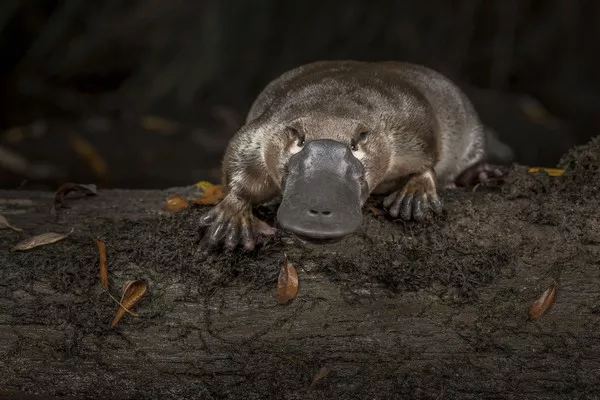Nature never ceases to amaze with its diverse array of life forms, each equipped with unique adaptations for survival. Among mammals, there exists a select group with a deadly secret – they are armed with potent toxins capable of inflicting harm on unsuspecting victims. In this article, we embark on a journey to uncover the world of venomous mammals, focusing on the five most poisonous species known to man.
5 Most Poisonous Mammals in the World
1. Platypus (Ornithorhynchus anatinus)
The platypus, native to Australia, is perhaps one of the most iconic examples of a venomous mammal. With its peculiar appearance resembling a mix of duck, otter, and beaver, the platypus stands out as a unique member of the animal kingdom. However, hidden within the male platypus’s hind limbs are venomous spurs capable of delivering a potent cocktail of toxins. These spurs are used primarily during mating season and territorial disputes but can also be deployed in self-defense when threatened.
The venom produced by the platypus contains a mix of proteins and peptides, with some compounds exhibiting neurotoxic properties. While the venom is not typically lethal to humans, it can cause excruciating pain and swelling that may last for several days. Additionally, the venom can induce incapacitation, making it difficult for predators or threats to pursue the platypus further. Despite its reputation as one of the most venomous mammals, encounters between humans and platypuses are rare due to their elusive nature and preference for remote aquatic habitats.
2. Slow Loris (Nycticebus spp.)
Found in the tropical forests of Southeast Asia, the slow loris is a small, arboreal primate known for its large, soulful eyes and deliberate movements. However, beneath its adorable exterior lies a potent defense mechanism – toxic brachial glands located in its upper arms. When threatened, the slow loris can activate these glands, secreting a venomous substance that it then spreads onto its fur using specialized grooming behaviors.
The venom produced by the slow loris is a complex mixture of proteins and chemical compounds, including histamine and allergens. While the venom is not lethal to humans, it can cause severe allergic reactions and even anaphylactic shock in some individuals. Furthermore, the slow loris’s venom serves as a deterrent against predators, discouraging them from attacking or consuming the primate. Despite efforts to protect and conserve slow loris populations, these elusive creatures continue to face threats from habitat loss and illegal wildlife trade.
3. European Water Shrew (Neomys fodiens)
The European water shrew, as its name suggests, is a semi-aquatic mammal found in freshwater habitats across Europe and Asia. Despite its small size, this shrew possesses a remarkable adaptation – venomous saliva. Using specialized grooves in its incisors, the European water shrew can deliver venomous bites to subdue its aquatic prey, which includes small fish and invertebrates.
The venom produced by the European water shrew contains a mixture of enzymes and toxins that aid in prey immobilization and digestion. While the venom is not harmful to humans in small doses, it can cause irritation and discomfort if introduced into open wounds or mucous membranes. Additionally, the European water shrew’s venom serves as a crucial tool for hunting and securing food in its aquatic environment.
4. Northern Short-tailed Shrew (Blarina brevicauda)
The northern short-tailed shrew, also known as the least shrew, is a small mammal found in North America. Despite its diminutive size, this shrew possesses a potent venom capable of immobilizing prey such as insects, earthworms, and small vertebrates. The venom is delivered through specialized salivary glands and is primarily used during hunting and feeding activities.
The venom of the northern short-tailed shrew contains a variety of toxic compounds, including blarina toxin, which acts on the nervous system of its prey. While not lethal to humans, a bite from the northern short-tailed shrew can cause pain, swelling, and other symptoms due to the presence of these toxic compounds. Despite its venomous capabilities, the northern short-tailed shrew plays a vital role in controlling insect populations and maintaining ecosystem balance in its native habitats.
5. European Mole (Talpa europaea)
The European mole, with its velvety fur and subterranean lifestyle, may not seem like a creature of danger. However, this small mammal harbors a toxic secret – mole-minor venom. Produced in its saliva and skin glands, mole-minor venom is primarily used by male moles during territorial disputes with other males.
The venom of the European mole contains a mix of proteins and peptides, some of which can cause allergic reactions and skin irritation in humans. While not typically lethal, the venom serves as a potent deterrent against rival males and predators, helping to maintain the European mole’s territory and ensure its survival. Despite its venomous capabilities, the European mole remains a fascinating and enigmatic inhabitant of underground ecosystems across Europe.
See Also: Top 10 Biggest Tigers In The World
Conclusion
From the iconic platypus to the elusive slow loris, the world of venomous mammals is as diverse as it is intriguing. These creatures have evolved unique adaptations to survive in their respective habitats, utilizing toxins as both a means of defense and obtaining prey. By understanding and respecting the natural world and its inhabitants, we can appreciate the vital role that these venomous mammals play in maintaining ecosystem balance and biodiversity.
You Might Be Interested In:





















